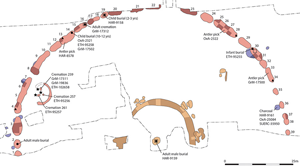A shift towards constructing large circular monuments, including henges, during the Middle Neolithic of Britain and Ireland is exemplified in the monumental landscape of south-west England.
Seventeen new radiocarbon dates for the Flagstones circular enclosure and the adjacent long enclosure of Alington Avenue, presented here, provide a chronology that is earlier than expected.
Comparison with similar sites demonstrates that Flagstones was part of a broader tradition of round enclosures but was also distinctly innovative, particularly in terms of its size.
These findings reinforce the value in developing precise chronologies for refining understanding of monument forms and associated practices.
You must log in or register to comment.


